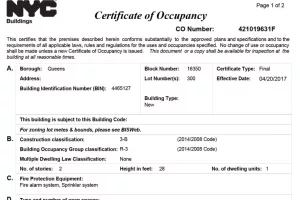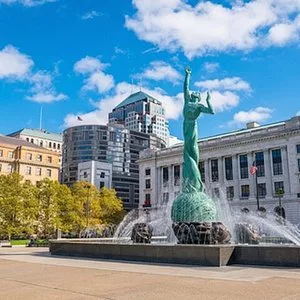What is a Certificate of Occupancy? When do you need it?
Go Back To Previous PageA Certificate of Occupancy, often abbreviated as C of O or CO, is a real estate document the Department of Buildings uses to indicate a building’s legal use and the type of permitted occupancy. For example, a CO will state whether a building is for residential, commercial, or mixed-use. The certificate of occupancy also indicates the number of residences or units allowed in the building. A certificate of occupancy verifies that the property complies with all relevant building codes and is safe for occupancy. If a property doesn’t have the proper C of O, the city can issue a “Vacate Order.” Therefore, it’s essential to understand the certificate when buying, renting, or renovating a property in NYC.
How Do You Get a Certificate of Occupancy in NYC?
In New York City, the Department of Buildings (DOB) issues certificates of occupancy after several inspections and the completion of all construction work. To obtain a CO, you must close all building permits and conduct a final inspection. The CO will be issued once the inspector confirms that the construction is finished and the building is safe.
building permits and conduct a final inspection. The CO will be issued once the inspector confirms that the construction is finished and the building is safe.
Obtaining a certificate of occupancy in NYC typically takes 6 to 12 months, although it can take much longer if there are any delays.
What If Your Building Has an I-Card Instead?
Before 1938, New York City did not require Certificates of Occupancy for buildings. As a result, some pre-1938 buildings do not have a Certificate of Occupancy. In such cases, an I-Card is usually accepted as the official record of the building’s occupancy.
However, buildings with I-Cards may need a Certificate of Occupancy if any legal alterations or conversions were made to the building after the last date listed on the I-Card.
DOB provides Letters of No Objection to confirm the legal use of a building constructed before 1938. To request a Letter of No Objection, go to the DOB Borough Office where your property is located. Bring any property-related materials you have that demonstrate the longstanding use of the property. LNOs are issued if the proposed or actual use of the building complies with New York City Building Codes and Zoning Resolutions and the occupancy load and exits are unchanged.
What If Your Building Doesn’t Have an I-Card or CO?
The landlord cannot collect rent for renters in a building without a Certificate of Occupancy (CO). Therefore, the landlord cannot take legal action against you for non-payment of rent. However, the landlord can still evict you through a holdover proceeding.
You need at least a temporary CO to begin financing if you purchase an apartment. Most lenders require the final CO before approving funding. In the case of new construction, prepare yourself for potential delays in obtaining the final CO.
Do You Have To Update Your CO When You Renovate?
Suppose you are planning significant renovations or purchasing a property with renovation plans. In that case, it is essential to update the Certificate of Occupancy (C of O) and obtain the necessary permits for the work you want to carry out. Any renovation or alteration that changes the number of rooms or the legal use of the building will require a permit. For example, you need a permit to convert a two-family dwelling into a three-family dwelling by adding a basement apartment.
To ensure compliance with regulations, a qualified architect or engineer can review your renovation plans to identify potential issues and advise you when an updated C of O will be necessary for your project.
What If I’m Purchasing An “as-is” or Bank-owned Property?
When a property owner is selling a home “as-is,” you will typically be responsible for correcting any Certificate of Occupancy (C of O) problems. Therefore, it is essential to review your purchase agreement to determine the scope and cost associated with purchasing the property, especially when you discover C of O problems.


